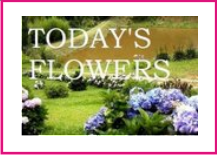
A foto foi tirada no jardim da casa do meu irmão. O click leva o crédito da minha linda cunhada, a Patrícia.
Vamos, então, ao que interessa: o nome científico do antúrio é Anthurium andraeanum. Faz parte da família Araceae, divisão Angiospermae. A origem desta flor é colombiana e seu ciclo de vida, perene.
Tradicional no paisagismo, ela está voltando à moda, posto que já fez parte da decoração dos anos 50 e 60, utilizada em vasos para decorar os interiores das finas residências. Atualmente, ela pode compor maciços e bordaduras em jardins externos também.
Tradicional no paisagismo, ela está voltando à moda, posto que já fez parte da decoração dos anos 50 e 60, utilizada em vasos para decorar os interiores das finas residências. Atualmente, ela pode compor maciços e bordaduras em jardins externos também.
O melhoramento genético proporcionou diversas variedades, com portes diferentes e flores de coloração vermelha, rosa e branca.
Exigente quanto à umidade, deve ser plantada sempre, à meia-sombra, em substratos ricos em matéria orgânica, como a fibra de coco misturada com terra vegetal. O antúrio demanda regas freqüentes e adubação adequada para florescer.
Exigente quanto à umidade, deve ser plantada sempre, à meia-sombra, em substratos ricos em matéria orgânica, como a fibra de coco misturada com terra vegetal. O antúrio demanda regas freqüentes e adubação adequada para florescer.
Uma ótima semana para vocês!
This is the second time that I take part of TODAY'S FLOWERS. I confess that my blog has never been visited as last week, exactly at the time I had took part of Luiz Santilli Júnior's creation. The success, therefore, is undeniable.
This picture was taken in the garden of my brother's house. The click of the photo has the credit of my beautiful sister-in-law, Patricia.
Let us, then, the matter: the scientific name of antúrio is Anthurium andraeanum. It is part of the family Araceae, Angiospermae division. This flower is from Colombia and this cycle of life, perennial. Traditional in landscaping, she is returning to be fashion, as it happens at the decoration of the 50 and 60's, used in pots to decorate the interiors of fine homes. Currently, it can now compose and massive edge in gardens outside as well.
The breeding has several varieties, with different sizes and flowers of red, pink and white. About the humidity, it should always be planted, the half-shadow, on substrates rich in organic matter, such as coconut fiber plant mixed with earth. The rules of antúrio demand frequent fertilization and proper to flourish.
Great week for you!
C'est la deuxième fois que j'ai fait partie de TODAY'S FLOWERS. Je confesse: mon blog n'a jamais été visité tant que la semaine dernière, exactement le temps passé à faire partie de la création de Luiz Santilli Júnior. Le succès est, donc, indéniable.
La photo a été prise dans le jardin de la maison de mon frère. Le crédit est de ma belle-soeur, Patricia.
Allons-nous, alors, à la question: le nom scientifique de antúrio est Anthurium andraeanum. Elle fait partie de la famille Araceae, la division des angiospermes. L'origine de cette fleur est colombiénne et son cycle de vie, éternel.
Traditionnelle en aménagement paysager, elle revient à la mode, car elle était déjà partie de la décoration des années 50 et 60, utiliséé dans des pots pour décorer les intérieurs de maisons élégantes. Actuellement, elle peut, désormais, composer les massives de pot dans les jardins en dehors aussi.
L'élevage a plusieurs variétés, de tailles différentes et des fleurs de couleur rouge, rose et blanc. Exigeantes sur l'humidité, elles doivent toujours être plantées, la demi-ombre, sur des substrats riches en matières organiques, tels que la fibre de coco mélangée avec la terre. Les règles du antúrio demandent, souvent, une bonne fertilisation a fin de prospérer.
Je vous souhaite une très bonne semaine!




19 comentários:
Anthuriums are only house plants where I live. So beautiful. MB
Flávia
Parabéns para você e toda a família que participou dessa blogagem, adorei as explicações e dicas.
bjs,
Denise
Flavia: It is an unusual and beatiful flower, thanks for sharing.
Beautiful and interesting flower!
Flávia
O antúrio era a planta de lei lá em casa. Minha mãe tinha muito ciúme deles. Levei muita surra por causa dessas plantinhas. Enfim...sem mágoas.
This is lovely. I see them sometimes in arrangements that come from the florist. It's lovely that you have them growing in the open.
My mother has a whole bed of anthurium's. They're so pretty and unique. Thank you for sharing it with us!
What a beautiful closeup.
It is a stunning photo.
Well done.
Excellent... I only see these either indoor or at the floris... Anthuriums are sure strange but very beautiful flowers.
Você merece as visitas, são lindas as fotos e com grande informação!
Beautiful! Anthurium are sold in floral arrangements here but never grow in gardens.
Very beautiful, brilliant colors.
Anturios, sempre lindos .
que bela escolha de flor! é linda
Flávia,
Parabens pela postagem e pelo seu sucesso!
Quanto mais cedo você entrar no domingo, como você fez, mais pessoas vão visitar seu blog!
Abraço
em três línguas, sim senhor, muito bem.
Bonita imagem.
Flavia,
Parabens ,você está arrasando.
Adorei a aula que você dá sobre as flores que escolhe para postar. O antúrio lembra minha infância , pois minha mãe e minha avó tinham vasos deles em suas áreas de entrada.
bjs
Wow, what an unusual and pretty flower!
Postar um comentário